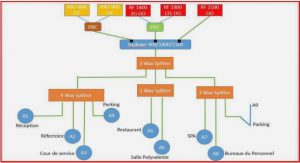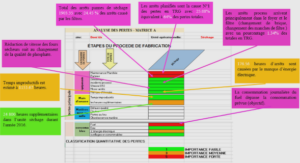Wireless system development
Wireless system development
Wireless communication has developed over the past twenty years from being a limited technology used by a handful of specialists to becoming integrated into a wide variety of electronic devices available to the general public. With the advent of data-centric applications such as the Internet, mobile communication, or wireless local area networks (WLANs), in the early nineties, wireless communication started its way into everybody’s daily life. New products (e.g., the iPhone or the iPad) and services (e.g., digital-TV or on-demand video strearning) calI for higher throughput and better quality of service which require new concepts and standards for wireless communication. Third Generation (3G) wireless systems were first implemented in Japan in 2001 to meet the above requirements. The International Telecommunications Union endorsed the following third generation wireless networks: CDMA2000, wideband CDMA, and time division synchronous CDMA.
The introduction of 3G wireless networks led ta the development of a wide range of multimedia applications, including online gaming, Internet browsing, video streaming. Nevertheless, despite its improved features, 3G has not yet manage to provide solutions for such issues as Multiple Access Interference (MAI) and Inter Symbole Interference (ISI). As a result, Fourth Generation (4G) wireless networks have begun to be developed in arder ta rectify the shortcomings of the previous generations of wireless systems. The main targets of 4G wire1ess systems are bandwidth expansiqn, data rate increase, extended coverage and reduced co st.
The International Mobile Telecommunications Advanced (IMT -Advanced) specificationsrequirements for 4G standards were published in March 2008 by the communications division of the International Telecommunications Union-Radio (ITU-R). The specifications included a
maximum speed of 100 megabits per second in the case of high mobility communication and 1
gigabit per second for low mobility communication .
Mobile WiMAX and Long Terrn Evolution LTE systems are frequently classified as 4G by wireless service providers, despite the fact that they do not reach the established peak rate of 1 Gbit/s, and thus not abiding by the specifications of IMT -Advanced. ITU-R made a concession on 6th December, 2010, namely that the aforementioned systems, and other 3G systems, could be categorized as 4G, despite not meeting the specifications of IMT -Advanced, if they could be demonstrated ta be precursors of the versions that abide by the specifications of IMT -Advanced
and show « a substantiallevel of improvement in performance and capabilities with respect to
the initial third generation systems currently deployed » .
Mobile WiMAX Release 2 (also known as Wireless MAN-Advanced or IEEE 802.16m’) and LTE Advanced (LTE-A) are IMT-Advanced compliant backwards compatible versions of the above two systems, standardized during the spring 20 Il, and promising peak bit rates in the order of 1 Gbitls. Services are expected in 2013 .
The objectives of 4G wireless networks include increasing the data transmission rate, reduced latency, and high reliability (reduction of wireless disconnection), by adapting packetoptirnized radio access systems that sus tain bandwidth distribution. Furthermore, 4G systems seek to decrease the price of infrastructure equipment and user terminaIs, as weIl as to use a modulation structure with a higher performance than the CDMA scheme employed by 3G networks, to maximize the use of communication bandwidth. These objectives caU for a complete reorganiz~tion of the physicallayer and the system architectural mode!.
Background and Motivation
In order to increase the data rate and the communication link robustness, 4G systems employs MIMO schemes alongside OFDM. The advantage of MIMO schemes is that they can reach higher throughput than SISO systems at the same bandwidth and transmit power. Wireless MIMO systems send and receive information over two or more antennas often shared among many users in case of multi-user system. The signaIs reflect off of objects in the environment causing multiple paths. In conventional systems, these multi-paths cause interference and fading. However, MIMO systems combine the multiple fading paths and users’ signaIs to overcome multi-user interference and fading, and thereby increase data throughput and reduce Bit Error Rate (BER) as compared to SISO systems. On the other hand, MIMO communication is targeted toward wideband systems which suffer from frequency-selective fading, and as a result the ISI will exist in the system. To mitigate this ISI effect and simplify the channel equalization, MIMO is combined with OFDM in order to convert the frequency-selective channel into a set ofparallel frequency-flat fading channels. Transmission using MIMO-OFDM is used to either increase the robustness of the system or the data rate. In a ri chI y scattered environment, transmit diversity play an important role to maintain the robustness of the wireless communication system. Transmission schemes that exploit diversity use spatial dimensions to add more redundancy, thus keep the data rate equivalent to SISO-OFDM system in order to increase the BER performance. Space-Time Coding is the principal of generating redundancy by coding across time and spatial dimensions [7]-[13], Space time Block Coding (STBC) [14] is the most widely used examples that employs STC scheme. On the other hand, Space Division Multiplexing (SDM) is employed if the algorithm uses different antennas to transmit multiple data symbols over the channel. SDM schemes are used if high data rates are the main objective of the system .
Both STe and SDM coding schemes cannot achieve multipath diversity and were proposed for flat fading channel and not suitable for frequency selective fading channels. These two problems could be solved if more frequency diversity is introduced to the system. MIMOOFDM provides the opportunity to code the transmitted symbols over different antennas (space) and sub-carriers (frequency), this coding scheme is known as Space-Frequency Block Coding (SFBC) and it can exploit the multipath diversity. Three dimensional coding over space, time and frequency is also known as Space-Time-Frequency Block Coding (STFBC). Both transmission schemes have recently been proposed in the literature [21 ]-[29]. However, the system complexity is a major obstacle and the decoding complexity problem has to be tackled. Additionally, most of the existing ST/SF codes are designed for single user systems only, for multiple access channels (MAC), the single-user ST/SF codes are always applied to each user independently, which results a reduced transmission rate. For example in conventional MIMO-OFDMA, us ers are separated in different frequency bands (sub-channels), and each user is coded separately using STBe or SFBC, leading to data rate reduction for each user when the number of users is increasing. The above reasons calI for a new transmission scheme to enables multiple access by joint code design across multiple antennas, OFDM frames (time), subcarriers, and users.
The significant performance improvements of the MIMO-OFDM systems cornes at the cost of increasing complexity of signal decoding at the receiver end. For example, in spatial multiplexing the linear increase in data rate with the minimum number of antennas at the transmitter and receiver end, is achieved with a more than !inear increase in decoder complexity irrespective of the nature of the used decoding algorithms. What is more, maximization of the potential benefits of multiple antennas technology necessitates even more complex algorithms, coming close to or surpassing the technological and economicallimits of the integrated circuits technology.
According to Moore’s Law, the chip’s transistor density doubles every two years, which put a maximum limit on the system performance improvement rate. On the other hand, according to Shannon’s Law, algorithms grow in complexity more rapidly than chips grow in density in order to reach the maximum channel capacity. This creates a gap between the algorithmic complexity and the hardware performance, the gap between·the complexity of algorithms and battery capacity are even more pronounced, which caUs for an efficient design of both more compact and more power efficient architectures.
Thesis Objectives and Scope
The objective of this thesis is to propose high performance algorithms with realistic complexity and real-time optimized FPGA architectures for the MIMO-OFDM Transceiver. First, in order to reduce the detection algorithm complexity at the receiver side, and at the same time improve the MIMO-OFDM performance, a novel transmission scheme for MIMO-OFDM based on the parity bit selected and permutation block spreading methods is proposed. In this scheme, the transmitted data is coded across space, time and frequency domains. The coding is done using a spreading code where the choice of this code is determined by the parity bits of the transmitted message vector across the multiple antennas. The proposed scheme enables multiple access by joint code design across multiple antennas, OFDM frames, subcarriers, and users. It will bene fit from the combined space, time and frequency diversity and allow users to share subcarriers with a manageable level of multi-user interference. Hence, better spectrum efficiency is achieved while improving bit error rate performance with respect to signal-tointerference rate.
The second objective lS to develop platform architecture for real-time prototyping environment. In the proposed platform, the communication between Matlab and FPGA board is managed directly ,through the Universal Asynchronous Receive and Transmit (UART). In this thesis, UART core functions are implemented using VHDL and integrated into the MIMOOFDM FPGA chip to achieve compact, stable and reliable data transmission, which effectively represent a complete hardware design platform for MIMO-OFDM system.
The third objective is to develop an end to end Floating-Point FPGA architecture for the proposed MIMO-OFDM Transceiver scheme. The proposed architecture· is divided into submodules where suitable optimization techniques are proposed for each sub-module in order to reach the overall optimized architecture.
|
Table des matières
Abstract
Acknowledgement
Table of contents
List of tables
List of figures
List of acronytTIS
Chapitre 1 – Introduction
1.1 Wireless system development
1.2 Background and Motivation
1.3 Thesis Objectives and Scope
1.4 Publications
1.4.1 Published
1.4.2 Submitted
1.5 Thesis Organization
Chapitre 2 – MIMO-OFDM
2.1 Introduction
2.2 Conventional MIMO-OFDM system
2.2.1 OFDM system model
2.2.2 OF DM Mathematical model
2.2.3 OFDMA
2.2.4 MIMO-OFDM Mathematical model
2.2.5 MIMO Detection techniques
2.3 MIMO-OFDM coding techniques
2.3.1 Space-Time coded MIMO-OFDM
2.3.2 Space Division Multiplexing (SDM)
2.3.3 Space-Frequency Block Coding MIMO-OFDM
2.4 Conclusion
Chapitre 3 – MIMO-OFDM with parity bit selected and permutation spreading
3.1 MIMO-OFDM with parity bit selected and permutation spreading
3.2 Simulation set-up
3.2.1 Power requirements
3.2.2 Channel conditions
3.2.3 Parameters for simulations
3.3 Numerical simulation results
3.4 Conclusion
Chapitre 4 – Design & Implementation ofMIMO-OFDM system
4.1 Design methodology:
4.1 Implementation platform
4.1.1 UART algorithm
4.1.2 UART Implementation results
4.1.3 Matlab interface
4.2 Design & Implementation ofMIMO-OFDM system
4.2.1 Spreading code selection
4.2.1 · Modulation and data spreading
4.2.2 SeriaI to ParaUel circuit
4.2.3 IFFT block
4.2.4 Cyclic Prefix insertion
4.2.5 Cyclic Prefix removal
4.2.6 Channel effect removal
4.2.7 Code Despreading
4.2.8 Maximum Likelihood Detection
4.1 Function validation
4.2 Synthesis results
4.3 Conclusion
Chapitre 5 – Design optimization
5.1 Introduction
5.2 Pipelined Architecture
5.2.1 IFFT with pipelined architecture
5.2.2 FFT with pipelined architecture
5.2.3 Implementation results for pipelined architecture
5.3 Despreading optimization
atnx mverSIOn optImlzatIOn
5.4.1 GAUSS-JORDAN algorithm
5.5 Fixed point architecture
5.6 Conclusion
Chapitre 6 – Summary and future work
6.1 Summary
6.2 Future work
6.2.1 Adaptive coding
6.2.2 Adaptive modulation
6.2.3 Integration’with channel estimation
References
Appendix A – Functional Simulation
Transrnitter function simulation
Receiver function simulation
Annexe B – Résumé de la thèse en français
B.2 Introduction
8.2.1 Problématique
8.2.2 Objectifs de la thèse
8.2.3 Organisation de la thèse
8.3 MIMO-OFDM avec étalement à bit de parité sélectionné et à permutation
B.3.2 Résultats de simulation numérique
BA Conception et hnplémentation FPGA du système MIMO-OFDM proposé
B.4.2 Résultats d’implémentation
B.5 Conclusion
![]() Télécharger le rapport complet
Télécharger le rapport complet






